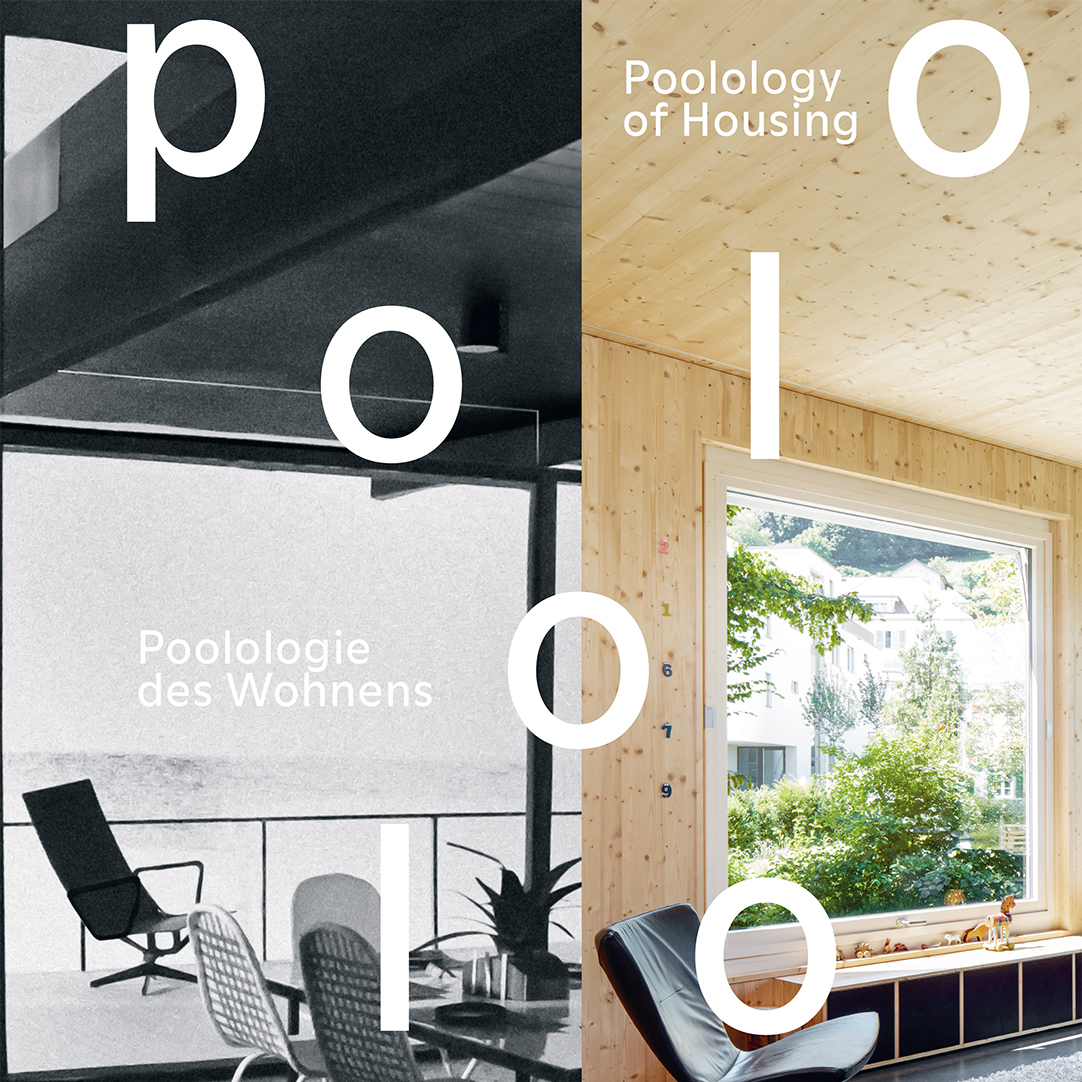***
Title: Poolology of Housing
Author: Pool Architekten
Edited by: Park Books
2019. ISBN: 978-3-03860-088-6
Language: German and English
440 pages
***
“As architects, we are in a perpetual struggle with the contradiction between the necessity for planning (residences must be built) for future occupants, and the impossibility of foreseeing that same future. In conceptualizing structures for nameless occupants, we unavoidably enter the realm of the hypothetical. Do architects inhabit not the reality, but the fiction of a society? Do they live in an anticipatory illusion? Or are they quite simply expressing what is already there?”
“Como arquitectos, estamos en una lucha perpetua con la contradicción entre la necesidad de planificar (las residencias deben ser construidas) para los futuros ocupantes, y la imposibilidad de prever ese mismo futuro. Al conceptualizar estructuras para ocupantes sin nombre, inevitablemente entramos en el reino de lo hipotético. ¿Los arquitectos no habitan la realidad, sino la ficción de una sociedad? ¿Viven en una ilusión anticipada? ¿O simplemente están expresando lo que ya está ahí?”
Page 117
Poolology of Housing is a book that, from its very title, expresses the nature of its content. We received three fundamental clues from it. The first would indicate the field of study of the book: typologies of collective housing; the second, the authors around whom the book is developed, that is, the Swiss office Pool Architekten; finally, we could deduce from the play on words established by this name the unconventional nature of Poolology of Housing, something that will be confirmed as soon as we tackle its study.
Poolology of Housing es un libro que desde su mismo título manifiesta la naturaleza de su contenido. Recibimos de él tres pistas fundamentales. La primera nos indicaría el campo de estudio del libro: tipologías de vivienda colectiva; el segundo, los autores en torno a los cuales gira el desarrollo del mismo, esto es, el estudio suizo Pool Architekten; por último, podríamos deducir del juego de palabras que establece este nombre el carácter poco convencional de Poolology of Housing, algo que quedará confirmado tan pronto como abordemos su estudio.
Pool Architekten is an architectural office established in Zürich for more than 20 years. Throughout those decades, they have focused their professional work and teaching activities primarily on the development of collective housing buildings. Their undogmatic attitude, a strong innovative drive and an evident mastery of the knowledge and handling of countless typological schemes have allowed them to produce some of the most outstanding projects within this field, references of obligatory study for anyone interested in the subject of collective housing.
Pool Architekten es una oficina de arquitectura establecida en Zürich desde hace más de 20 años. A lo largo de estas décadas, han centrado su trabajo profesional y actividad docente fundamentalmente en el desarrollo de edificios de vivienda colectiva. Su actitud poco dogmática, un fuerte impulso innovador y un evidente dominio en el conocimiento y manejo de incontables esquemas tipológicos les han permitido producir algunos de los proyectos más destacables en ese ámbito, referencias de obligado estudio para todo aquel interesado en el tema de la vivienda colectiva.

From the introduction of Poolology of Housing, we received a strong clarification: this book is not a manifesto on making collective housing, nor even a collection of case studies around research of different typologies. This book is intended as a tool to generate possibilities by encouraging curiosity. The approach is certainly suggestive and, why not say it, innovative in a certain sense. The books focused on the study of domestic typologies are, for the most part, restricted to very rigid schemes based on the succession of case studies.
Desde la introducción de Poolology of Housing recibimos una aclaración contundente: este libro no es un manifiesto sobre el hacer vivienda colectiva, ni tan siquiera una recopilación de casos de estudio en torno a la investigación de distintas tipologías. Este libro se propone como una herramienta generadora de posibilidades fomentando la curiosidad. El planteamiento es desde luego sugerente y, por qué no decirlo, innovador en cierto sentido. Los libros centrados en el estudio de las tipologías domésticas suelen estar, en su mayor parte, encorsetados en esquemas muy rígidos basados en la sucesión de casos de estudio.
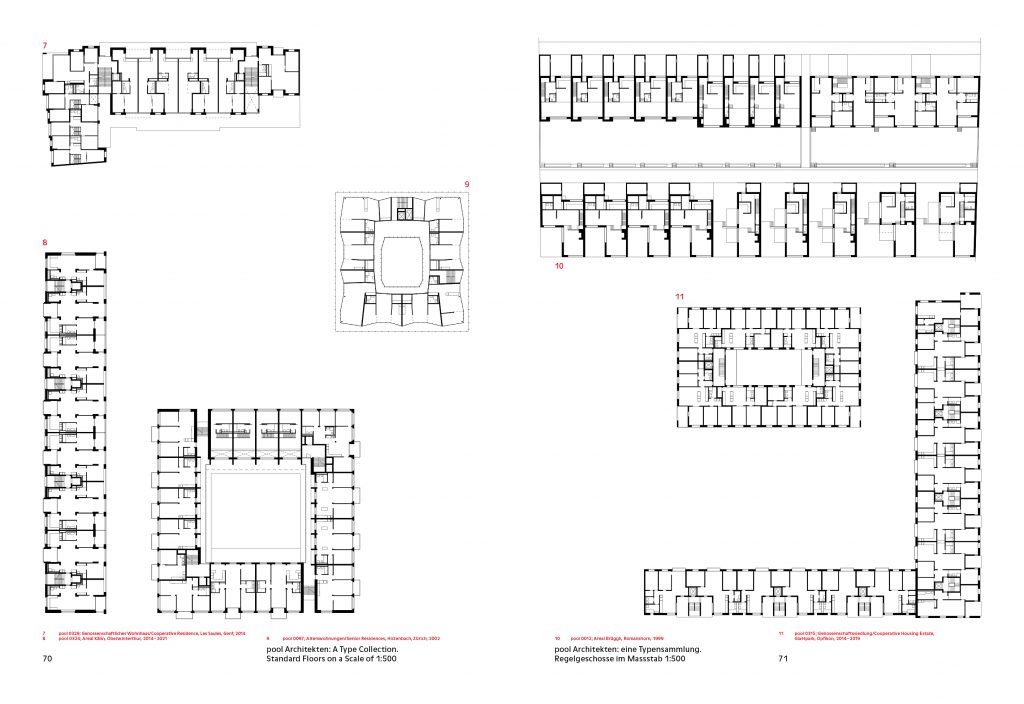
As we move forward with the reading, we see that Poolology of Housing is a unique book. From a certain time, one has the feeling that hardly a book on architecture can surprise oneself any more. Poololgy of Housing, however, succeeds. The peculiar narrative structure that it presents creates a special atmosphere, where analytical texts are mixed with others of a very pedagogical nature, as well as images and plans on different scales, from own projects, reference works and student works. We had the feeling, as we went deeper, that more than reading a book linearly we were in an informal chat with a group of friends around a table, where different topics overlapped and intertwined passionately. Without a doubt, the ability to evoke these feelings is the fundamental virtue of the book, and is certainly an absolutely outstanding aspect.
A medida que avanzamos por el desarrollo del libro comprobamos que Poolology of Housing es un libro singular. A partir de cierta altura, uno tiene la sensación de que difícilmente un libro de arquitectura puede sorprenderle ya demasiado. Poololgy of Housing, sin embargo, lo consigue. La peculiar estructura expositiva que presenta construye una atmósfera especial, donde se mezclan textos analíticos con otros de carácter muy pedagógico, así como imágenes y plantas a distintas escalas, de proyectos propios, de obras de referencia y de trabajos de estudiantes. Hemos tenido la sensación, al profundizar, de que más que leer un libro linealmente estábamos en una charla informal con un grupo de amigos alrededor de una mesa, donde diferentes temas se superponían y entrelazaban apasionadamente. Sin ningún género de duda, la capacidad de evocar estas sensaciones es la virtud fundamental del libro, y es desde luego un aspecto absolutamente sobresaliente.
Beyond the personal impressions that the book may arouse, let us review in detail the structure of its contents to better understand what it offers us. As we have already mentioned, the central body of the book orbits around the concept of typology, also offering us a complementary vision from the materialization, analysis and conception of the domestic interiors. Thus, Poolology of Housing begins with a series of essays that contextualise Pool Architekten’s concern for the realm of humanistic culture, especially disciplinary, that builds the idea of typology. The depth, precision and clarity of the texts are exceptional. They therefore become fundamental tools for knowing and understanding the work of their authors, although this is certainly not their purpose as was explained in the introduction. By stimulating the imagination of their readers, as they will do with their students in the academic field, they certainly expose a method of analysis and work of great value.
Más allá de las impresiones personales que el libro pueda despertar, repasemos con detalle la estructura de sus contenidos para entender mejor qué nos ofrece. Como ya se ha comentado, el cuerpo central del libro orbita alrededor del concepto de tipología, ofreciéndonos además una visión complementaria desde la materialización, análisis y concepción de los interiores domésticos. Así, Poolology of Housing se inicia con una serie de ensayos que contextualizan la preocupación de Pool Architekten por todo el andamiaje cultural, especialmente disciplinar, que construye la idea de tipología. La profundidad, precisión y claridad de los textos es excepcional. Se convierten por lo tanto en herramientas fundamentales para conocer y comprender la obra de sus autores, aunque no sea éste desde luego el propósito de los mismos como bien se expuso en la introducción. Incitando la imaginación de sus lectores, como de manera análoga harán con sus alumnos en el ámbito académico, exponen con seguridad un método de análisis y trabajo de gran valor.
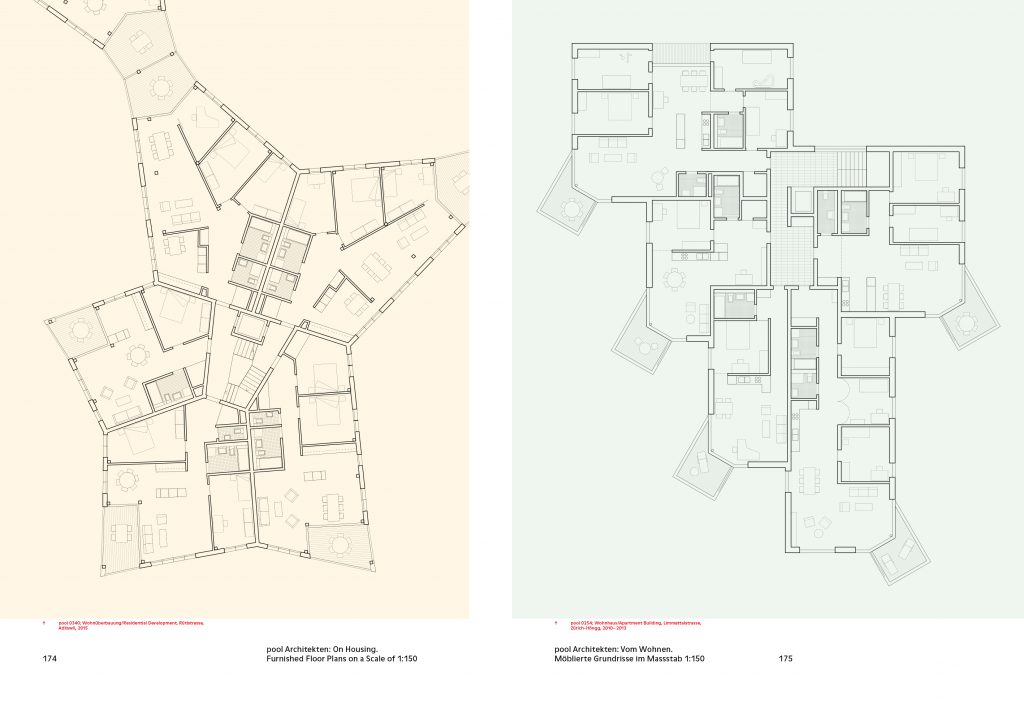
These texts are accompanied, in the first place, by type plans with very different architectural references and images of models of students of the TU Berlin that show with some hypertrophied detail and a literal hyperrealism domestic interiors of essential works. After that we find a collection of 1:200 type plans from different projects by Pool Architekten, as well as exterior photographs of some of their built projects. These graphic documents are not presented with the intention of explaining the projects they represent, but simply to build a frame of reference to illustrate the work on the idea of typology that the Zürich-based office is carrying out in the field of collective housing. Unfortunately, we cannot maintain our enthusiasm with this choice. We consider the decision to show unconnected floors without orientation, context, programme or the support of other drawings in section or elevation to be a sadly missed opportunity. The reduction of the plan document, despite being impeccably represented, to a mere typological diagram makes it impossible to study the projects, and furthermore, makes it absurdly complicated to understand the existing problems in each project to which the typology resulting from the design process supposedly is answering. The following chapters, presenting furnished floor plans on a scale of 1:150 and interior images of own projects, delve deeper into this problem.
Estas disertaciones están acompañadas, en primer lugar, por plantas tipo de referencias arquitectónicas muy dispares e imágenes de maquetas de estudiantes de la TU de Berlín que muestran con un detalle hipertrofiado y un hiperrealismo literal interiores domésticos de obras fundamentales. A continuación se muestra una colección de plantas tipo a escala 1:200 de diferentes proyectos de Pool Architekten, así como fotografías exteriores de algunos de sus proyectos construidos. Estos documentos gráficos no se presentan con intención de explicar los proyectos que representan, sino simplemente para construir un marco referencial que ilustre el trabajo sobre la idea de tipología que en el ámbito de la vivienda colectiva realiza el estudio de Zürich. Lamentablemente, no podemos mantener nuestro entusiasmo con esta decisión. Consideramos una oportunidad tristemente perdida la decisión de mostrar plantas inconexas, sin orientación, contexto, programa ni el soporte de otros dibujos en sección o alzado. La reducción así del documento de la planta, a pesar de estar impecablemente representado, a un mero diagrama tipológico imposibilita el estudio de los proyectos, haciendo además absurdamente complicado comprender los problemas existentes en cada proyecto a los que la tipología resultado del proceso de proyectación supuestamente da respuesta. Los capítulos posteriores, presentando plantas amuebladas a escala 1:150 e imágenes interiores de proyectos propios ahondan en esta problemática.
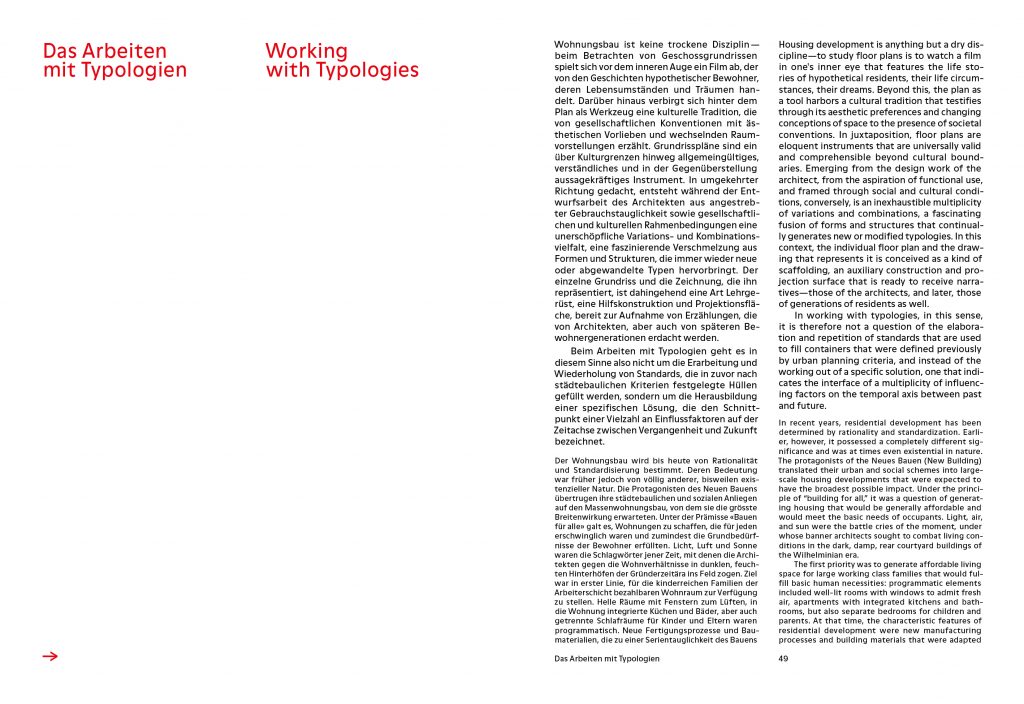
“Through recourse to historic floor plan organizations, we can learn that collectivity can de conceptualized simoultaneously as unity and as multiplicity. There are public places and places for retreat. The expansiveness of a conceopt that goes beyond the individual residential unit provides space for movement, for escaping the narrowness of family life. These models offer references for spatio-structural organization, such as through the application of spatial sequences and niches. Movement throguh the house from the public street to the prívate space procedes via a sequentially conceived dramaturgy that is assigned the appropriate spatial breadths and heights.”
“Mediante el recurso de esquemas en planta históricos, podemos aprender que la colectividad puede conceptualizarse simultáneamente como unidad y como multiplicidad. Hay lugares públicos y lugares de retiro. La amplitud de un concepto que va más allá de la unidad residencial individual proporciona espacio para el movimiento, para escapar de la estrechez de la vida familiar. Estos modelos ofrecen referencias para la organización espacio-estructural, por ejemplo, mediante la aplicación de secuencias y nichos espaciales. El movimiento a través de la casa desde la calle pública hasta el espacio privado procede a través de una dramaturgia concebida en forma secuencial a la que se le asigna la amplitud y la altura espaciales apropiadas”.
Page 56
With this bittersweet feeling we arrive at the second part of the book, focused on showing the materialization of the projects and, especially, focused on the conceptual and material construction of the domestic interiors. Over the course of a sixty-page essay, a frame of references is constructed on the use of different materials, briefly explaining the main characteristics of steel, wood, brick… The different chapters have an expressive and expository clarity that is once again remarkable, but the deficient relationship that is exposed in relation to Pool Architekten’s own work once again generates a sense of bewilderment.
Con esta sensación agridulce llegamos al segundo bloque del libro, centrado en mostrar la materialización de los proyectos y, especialmente, enfocado en la construcción conceptual y material de los interiores domésticos. A lo largo de un ensayo de sesenta páginas se construye un marco referencial sobre la construcción de ideas y la utilización de distintos materiales, explicando con brevedad las principales características del acero, madera, ladrillo… Los distintos capítulos muestran una claridad expresiva y expositiva de nuevo destacable, pero la deficiente relación que se expone en relación a la propia obra de Pool Architekten nos genera de nuevo una sensación de desconcierto.
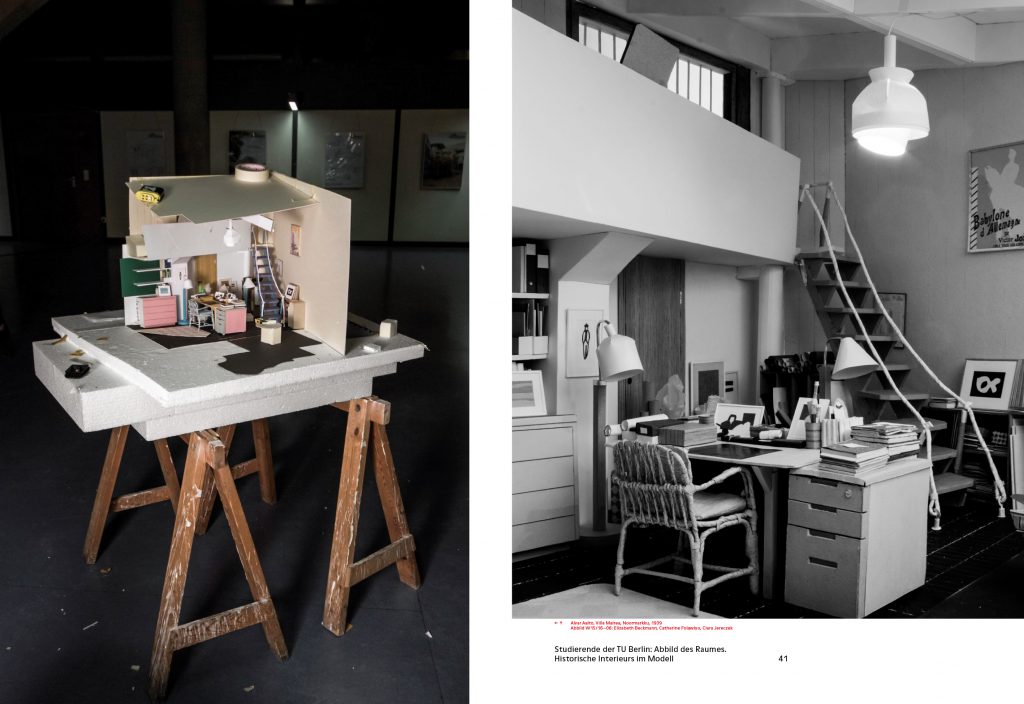
Approaching the end of the book, plans of different scales (the same ones used for the own projects) and more pictures of models are exhibited, all of them made by students of the TU Berlin. Disposing the work of self-taught students alongside your own work seems to us to be an activity of great pedagogical interest, but the excessive importance given to it, especially aggravated by the lack of a critical analysis in this respect, undermines its relevance.
Para poner cierre al libro, se exponen plantas a diferentes escalas (las mismas que se utilizaron para los proyectos propios) y más imágenes de maquetas, todo ello obra de estudiantes de la TU de Berlín. Disponer el trabajo de estudiantes tutelados por uno mismo junto a tu propio trabajo nos parece una actividad de gran interés pedagógico, pero la excesiva importancia que se le da, sobre todo agravada por la inexistencia de un ejercicio de análisis crítico a ese respecto, terminan por minar su relevancia.
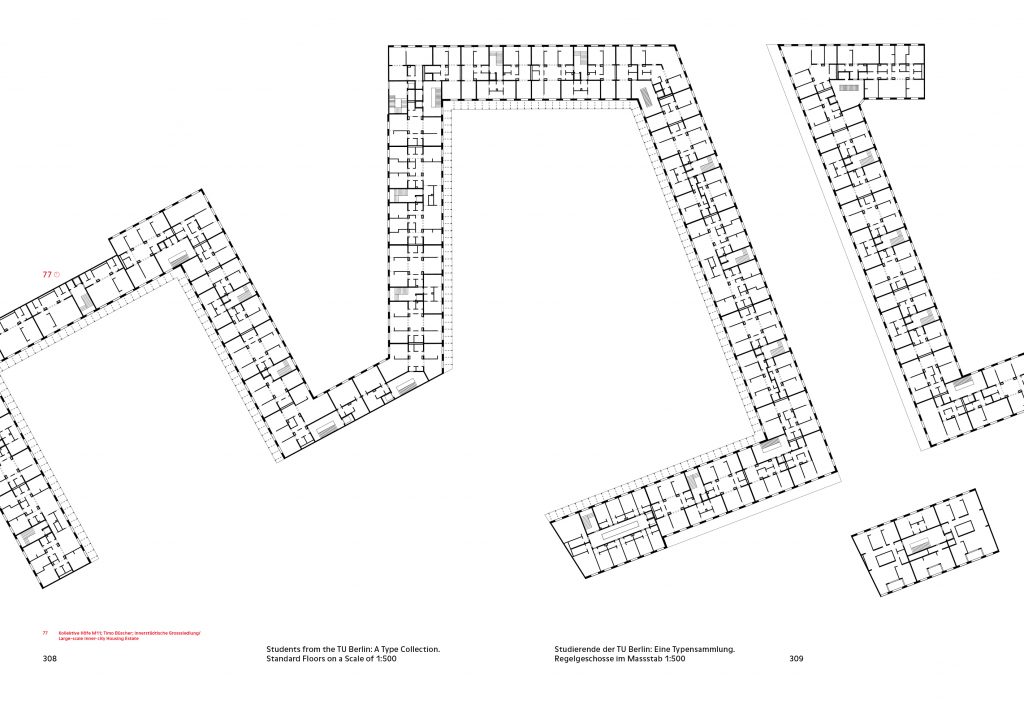
Poolology of Housing is a book on housing, not even on architecture in general, which could be everything but conventional. Edited in a high quality format by Park Books, instead of presenting a critical work in a legible way, it aims to capture and crystallise the concern of a group of architects on a certain topic, with its inconsistencies or errors but also with an interesting capacity for evocation. The disparity of the subjects dealt with, as well as the lack of connection between documents and discourses and, especially, the impossibility of approaching in depth a work as valuable as that of Pool Architekten prevent this book from becoming the reference work it could have been. It is, however, a highly recommendable experience for anyone interested in the realm of domestic typology.
Poolology of Housing no es un libro de vivienda, ni si quiera de arquitectura a modo general, nada convencional. Editado en un formato de gran calidad por Park Books, en lugar de exponer un trabajo crítico de manera legible persigue captar y cristalizar la preocupación de un grupo de arquitectos sobre un tema determinado, con sus incoherencias o errores pero también con una interesante capacidad de evocación. La disparidad de temas tratados, así como la falta de conexión entre documentos y discursos y, especialmente, la imposibilidad de acercarse en profundidad a una obra tan valiosa como la de Pool Architekten evitan que este libro pueda convertirse en la obra de referencia que podría haber sido. Constituye, sin embargo, una experiencia francamente recomendable para cualquier persona interesada en el marco conceptual de la tipología domestica.
